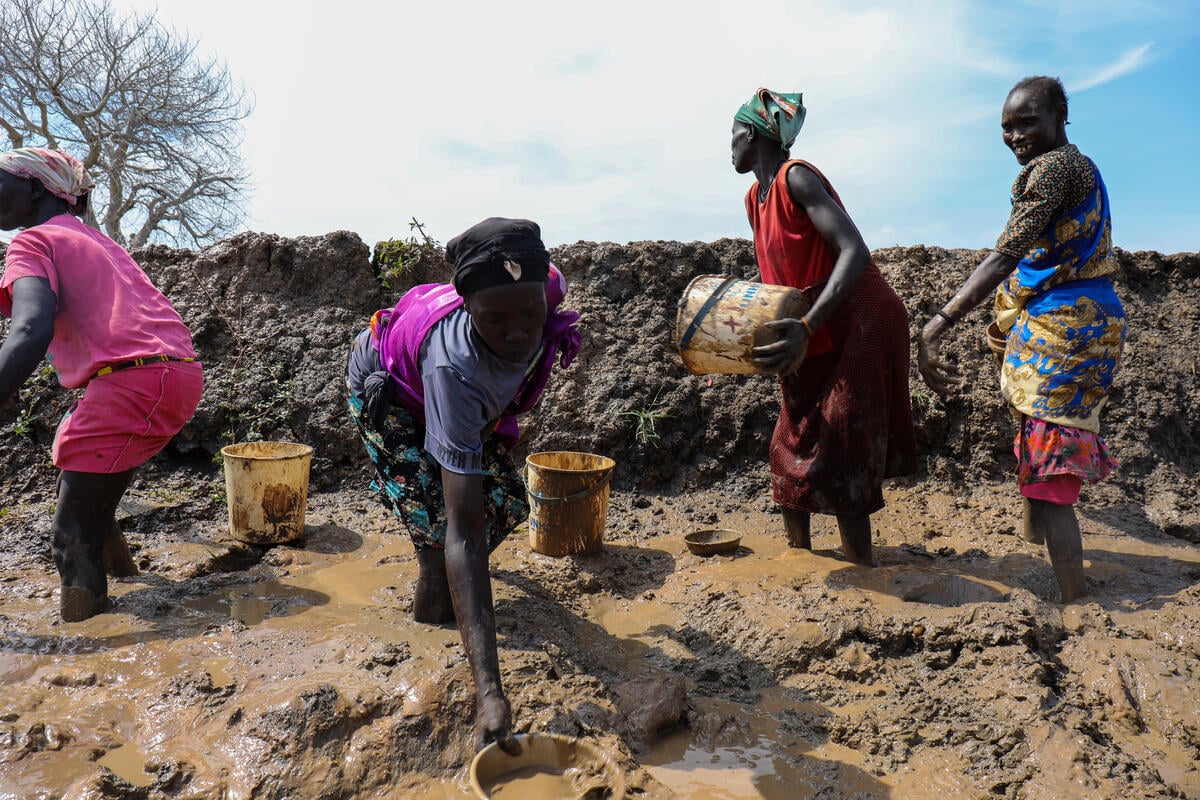Fighting displaces more than half a million people inside Ukraine, hundreds of thousands more into neighbouring countries
Fighting displaces more than half a million people inside Ukraine, hundreds of thousands more into neighbouring countries
Fighting in eastern Ukraine this year has resulted in over half a million people becoming internally displaced, while hundreds of thousands have fled to Russia and other neighbouring countries.
According to official figures from the Ukrainian State Emergency Service, as of the beginning of December, some 514,000 people had been internally displaced by the conflict. Ukrainians are also seeking international protection, with some 233,000 applying for refugee status or temporary asylum in the Russian Federation, according to Russia's Federal Migration Service.
Applications for asylum by Ukrainian citizens have also risen in the European Union this year. As of the end of October, 8,936 Ukrainians had asked for international protection in the EU, a ten-fold increase from the 885 asylum applications for the whole of 2013. The EU country receiving the largest number of Ukrainian asylum seekers so far this year was Poland (1826), followed by Germany (1622), France (1076) and Sweden (840).
The number of Ukrainians fleeing abroad could be considerable higher than the number of asylum seekers, however, as many Ukrainians prefer to apply for other forms of legal stay such as temporary or permanent residence permits in other countries. So far this year, over 317,000 Ukrainians have applied for such permits in Russia (222,000), Belarus (60,000), Poland (23,000) and other neighbouring countries. It is not clear, however, if all of these people left Ukraine because of the conflict or for other reasons.
In Ukraine, most internally displaced persons (IDPs) remain in regions close to the conflict, including the eastern city of Kharkiv (118,000) and government-controlled territories in Donetsk (76,000) and Luhansk (30,000), as well as in the Zaporizhzhia (51,000) and Dnipropetrovsk (48,000) regions. Most IDPs are children (27 per cent), elderly or disabled people (21 per cent) and women (65 per cent of the adult displaced population).
On 7 November, the Cabinet of Ministers of Ukraine adopted a resolution which provides for the transfer of state-run institutions and social payments from the regions not currently under government control to government-controlled areas. UNHCR is concerned that this provision will have unintended negative effects such as increasing internal displacement, as people are forced to move from areas not controlled by the Ukrainian government in order to receive their pensions and social benefits, while causing serious hardship to those unable or unwilling to leave their homes. Although UNHCR has no first-hand information about conditions in areas not under government control, there are strong indications that the civilian population in these areas is facing considerable hardship. We are seriously concerned about a deepening humanitarian crisis in these areas.
With the onset of winter, UNHCR continues to work to improve the conditions of some of the most vulnerable displaced people. Following pilot projects in the Kyiv, Lviv and Vinnitsa regions, UNHCR is extending its one-time cash assistance programmes for vulnerable IDP families to 11 other regions. By the end of the year, we aim to have benefitted over 10,000 of the most vulnerable displaced people in Ukraine.
An estimated 30,000 to 40,000 IDPs (6-8 per cent of the total IDP population) are currently accommodated in collective centres, including some of the most vulnerable individuals and families. The rehabilitation of collective centres in Kharkiv, Luhansk, Donetsk, Dnipropetrovsk and Zaporizhzhia regions is ongoing through direct implementation or in partnership with the local authorities. Since needs are greatest near the conflict areas, UNHCR and its partner "People in Need" are planning to repair and make ready for the winter a further 12 collective centres in the northern Donetsk and Kharkiv regions. This brings the total number of premises under different stages of refurbishment to 47. At the same time, the distribution of 47,000 square-metres of plastic sheets began in Luhansk and southern Donetsk to assist some 5,500 people with emergency home repairs.
In Russia, UNHCR undertook monitoring missions in late October to Vladivostok and Khabarovsk in the Russian Far East, and to Irkutsk in eastern Siberia, in order to observe the reception conditions and integration options for Ukrainians arriving in these areas. While those in possession of temporary residence permits arrive at their own expense and reside with families and friends in Russia, the majority of the refugees and people with temporary asylum status arrive through the centralised relocation system and stay mostly in Temporary Accommodation Centres (TACs) which have been set up in the dormitories of colleges and universities, children's vacation camps and sanatoria. While the TACs that the UNHCR teams visited were well-equipped for winter conditions and had adequate schooling and medical facilities, UNHCR has received information that reception conditions for other refugees are less satisfactory. Ukrainian refugees also report restrictions to moving to other cities. UNHCR is advocating for refugees to be integrated or provided assistance to return on a voluntary basis whenever they want to return.
For more information on this topic, please contact:
- In Kiev, Nina Sorokopud on mobile +380 50 310 1767
- In Moscow, Galina Negrustueva on mobile +7 903 721 7560
- In Geneva, William Spindler on mobile +41 79 217 3011









